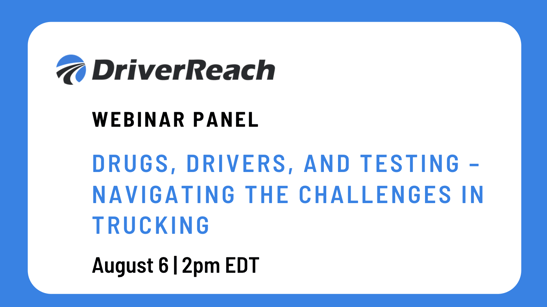By: Steve Prelipp of Prelipp Consulting
In the fourth quarter of 2019, day-to-day life in the US was in the normal range. The advent of Coronavirus has rapidly changed many parts of the trucking environment. For example, over a few short months, the following terms have become very important:
- Coronavirus
- Social distancing
- Working from home
- Community spread
- Flattening the curve
- Ventilators
- Personal protective equipment (PPE)
The impact of Coronavirus has been fast and pervasive. Since this is a new virus, we have no immunity or vaccine to mitigate the spread and the impact. The existing practices for most trucking companies included:
- Driver recruiters worked in an office setting to do their job.
- Many drivers came to orientation by public transportation (bus or airplane)
- Driver orientation was conducted in a classroom environment.
This was normally at company headquarters and/or other company terminals. None of these practices are consistent with the need to limit the spread of Coronavirus by using social distancing. Instead the current practices need to include:
- Practice social distancing (staying 6 feet away from people)
- Stop using public transportation, such as buses and airline flights
- Thoroughly washing our hands (for at least 20 seconds), frequently
- Have most people work from home where transmission of this highly contagious virus is much less likely
There are many fast-moving parts to both the national Coronavirus story and the driver-recruiting story. As of now, trucking companies still need to be recruiting and onboarding drivers weekly. Over the past several years, trucking companies have become quite efficient at this. The tools and processes are in place to do this efficiently
Government and health officials now know that this disease spreads rapidly from person to person based on physical proximity. As a result, state and local officials are very rapidly imposing mandatory methods to create social distancing up to and including not allowing workers to come to non-essential jobs. These changes require rapid and far-reaching adjustments to the driver recruiting and orientation processes in trucking companies.
There are two major parts to the driver capacity addition story: driver recruitment and driver orientation.
DRIVER RECRUITMENT
In recent years, driver recruiting has increasingly relied on electronic methods.
- Advertising is focused on the Internet — Facebook, pay per click, job boards, etc.
- Companies use robust Applicant Tracking Systems (ATSs) to support recruiting and qualifying drivers.
- The driver recruiter’s job is also geared to use of the telephone, internet and the applicant tracking system.
- Applications go into the ATS electronically
- Verifications of Employment (VOEs) are often done electronically
- Drivers can electronically sign releases
- Important qualification documents such as MVR, PSP, etc., can be requested from your ATS and the information is populated electronically
A wild card is the fact that the Coronavirus is forcing many recruiters (if not all) to work from home to create social distancing.
For companies that have a robust Applicant Tracking System AND processes that optimize the use of their electronic capabilities, changing to a remote “social distancing” environment is challenging but very doable.
DRIVER ORIENTATION
Driver orientation can be much more challenging. Preventing the spread of the Coronavirus demands that we need to do social distancing and minimize the number of people in a room (such as an orientation classroom). Orientation includes important factors such as:
- Transporting drivers (formerly often by bus or airline)
- Training drivers how to do company processes (normally in a classroom setting)
- Hearing from and connecting with company people, from executives to payroll clerks
- Hearing from and connecting with fleet managers
- Assigning new drivers to their tractors
Companies need to accomplish the above in new ways. This means creatively using videos, texting, WhatsApp, Go To Meeting, Skype and other tools to communicate and train without being in the same room. The electronic material allows drivers to get trained AND practice social distancing.
Bottom Line:
Companies need to have the orientation content in an electronic format. This can be a combination of:
- Commercially produced material such as safety, hours of service, etc.
- Material that you create
- Live training using Zoom, Go To Meeting, etc. that have both audio and video.
The traditional way for many trucking companies to transport drivers to orientation and their truck is using the bus transportation. Car rental is a better choice because it takes away the social distancing issue and drivers prefer to do their own driving.
How much you need to change how you are doing things depends on where you are starting from. My recommendations are to:
- Write down your current orientation steps in sequence, making note of the steps that do not work in the Coronavirus environment
- Write down alternative ways to meet your orientation objectives and still not spread Coronavirus
- Be creative and open minded — minor tweaks of old practices will not work
- Make it clear to all stakeholders in the process that resisting change is not an option. You expect them to actively contribute ideas and action to creating new, effective ways of doing things
- Maximize the use of available technology — videos, Skype, etc.
- Document in detail the new processes you will be using
- Train and practice the new methods
Make it clear that some new methods will not work as expected and plan to make adjustments.
Optimizing your processes in a Coronavirus environment is not discretionary. Making smart changes in your company’s way of doing business will require C-level emphasis and well-qualified, empowered managers / change agents and all employees buying into your new way of doing business.
There are several potential side benefits that include:
- You may come up with new processes that are better than what you currently do
- Your company team will have the pride from successfully making major changes fast
- Your company will stay in business
This article was written on March 25th, 2020, by Steve Prelipp of Prelipp Consulting. For questions regarding this article or consulting inquiries, please contact Steve at Steve@Prelippconsulting.com.
Stay up to date on CDL trucking trends! Be sure to check out the DriverReach blog or follow us on LinkedIn for other relevant articles and head over to our webinars page for an up-to-date list of upcoming events and on-demand recordings.
Interested in seeing DriverReach’s modern Recruiting Management System in action? Request a demo!











